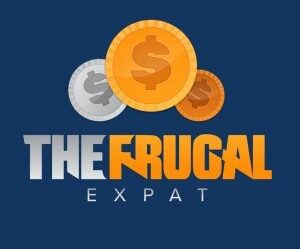Credit cards and loans can be important assets in our lives – they help us get an education or build trust with banks for larger purchases like homes. But high-interest rates can mean danger. If you can't keep up with payments, the mounting debt can feel suffocating.
But high interest doesn't have to be a nail in the coffin; there are many methods to getting a lower interest rate.
Call Your Lender
Yes, it's that simple! You can negotiate a lower rate by calling your credit card company or loan lender. With this method, most people who try are successful. This is the most straightforward option, and it's often overlooked.
If there are several cards that you'd like to negotiate, start with the one you've had the longest. Starting with your oldest debt or line of credit might work best since they're more likely to trust you. However, you'll want to be prepared before making that phone call.
First, look at your payment history. If you've consistently made payments on time, bring that up to your lender. They're more likely to give you a break if you've shown them in the past that you're a trustworthy borrower.
Also, take note of your credit score; has it recently gone up? Anything you can show your lender to prove that you've been responsible will help in your favor.
Don't be afraid to do some research. Look into other credit cards and see what rates they're offering. If they're lower, you can bring that to your lender and ask if they'll match it.
Negotiate
The more ammo you have ready before picking up the phone, the better. When it is finally time to call, remember: being polite is key. You're asking your lender for a favor, and no one wants to help someone who is rude or demanding. Be kind and remember the person on the other line is just doing their job.
Try again later if it doesn't work out the first time you call. The following person to answer might be more willing to negotiate. You can also ask for a temporary rate reduction instead of a permanent one. This will give you some time to pay off your debt before your rates go back up.
Transfer Your Balance
If your lender doesn't budge, there are other options. A balance transfer card lets you consolidate your credit card debt. This is better if you're accruing interest on multiple cards since you can put it all on one account. That way, you're paying one set interest rate instead of several. Many cards have a 0% interest rate or APR for a set period.
Frequently, you'll have 12 to 18 months where interest won't be compounded on top of your existing balance. This gives you a great window to tackle your debt.
However, transferring your balance usually comes with a fee – usually between 3% to 5%. So if you're transferring $2,000, you might have to pay between $60 and $100 in fees depending on which lender you go to. This fee might be annoying, but it could save you a lot of money in the long run.
Instead of transferring your balances to another credit card, you can take out a consolidation loan. This type of personal loan usually has a lower interest rate than more credit cards. While it's slightly different, the purpose is to move your debt to one account. You can contact a lender to loan you the amount for your total balances.
Use that to pay off your credit cards, then turn your focus to paying off the new loan.
Having all of your debt in one account will save you money in the long run and keep you organized throughout the process. It's much harder to keep up with your debt when it's accruing interest in several accounts.
A Debt Management plan
By reaching out to a nonprofit credit agency, you can set up a debt management plan (DMP). The nonprofit will help you create a payment schedule and lower your interest without a loan. However, you'll likely be forced to close your credit cards, so you don't continue to rack up debt.
You might not have to close all of your cards, but it's probably a good idea that you do.
“If the thought of closing your cards scares you, you can rest easier knowing that you aren't required to include all your cards,” says Debt.com chairman and CPA Howard Dvorkin. “Although I encourage you to do so because learning to live without depending on credit will change your life.”
One of the pros to this is that you don't have to have certain qualifiers because you aren't seeking out a new lender. So even if you have too much debt or a credit score that would disqualify you from other programs and methods, you'll still qualify for a DMP.
Not to mention that a DMP can cut your monthly payments by 50 percent. It doesn't hurt your credit score; in fact, there's a chance it'll raise your score.
First, you'll usually speak over the phone for a free evaluation with a certified credit counselor. They'll go through your current debt and credit, discuss your goals, and explain the options. If you and the counselor agree on a plan, they'll reach out to your creditors. Your creditors will pause interest and penalties on your accounts while accepting payments through the program. You'll pay a monthly fee to the credit counseling agency to distribute that money to your creditors.
On average, through this method, people ultimately pay off their debts in three to five years. By the end of the program, you'll be able to close your accounts in good standing with your creditors.
Final Thoughts
Interest payments are based on the current balance in your account. So the more you pay every month, the smaller your overall balance and the smaller your interest payments will be. To avoid accruing interest on your debts, be sure to pay more than the minimum monthly payment.
Make multiple payments, maybe every two weeks or every time you receive your paycheck. Seeing the numbers in your checking account go down doesn't seem fun, but putting more towards your debts now will save you more money later.
Growing debt can feel insurmountable, but it's not a death sentence. You can always contact a nonprofit credit counseling agency for free advice. If none of these options seem right for you, there are other paths toward debt relief.
This post was produced and syndicated by Wealth of Geeks.







